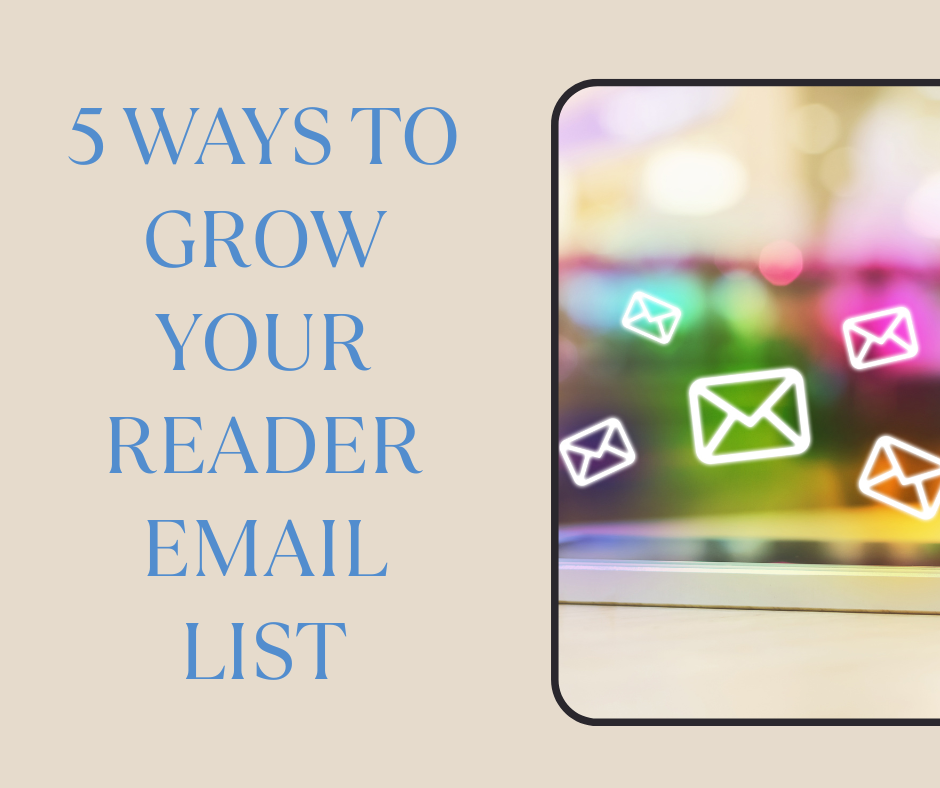5 Easy Ways to Grow Your Reader Email List
Let’s be real: most indie fiction authors didn’t sign up to become email marketers.
We just want to write stories, build worlds, and emotionally connect with readers.
But if you’re writing books and hoping to build a sustainable career, one thing becomes very clear, very quickly:
✉️ Your email list is everything.

It’s how you reach readers without relying on social algorithms.
It’s how you stay in touch between launches.
It’s how you build a loyal audience that actually wants to hear from you.
The good news? Growing a reader list doesn’t have to be complicated or salesy.
Here are 5 simple ways to start building your list without sacrificing your writing time or your sanity:
1. Create a Reader Magnet That Actually Attracts
You’ve probably heard of lead magnets before. But if “Get My Newsletter!” is your big offer… we need to talk 😬
Instead, offer something that adds immediate value to your ideal reader. Some great options:
-
A prequel or deleted scene from your book
-
A “secret epilogue” for newsletter subscribers only
-
A short story set in your universe
-
A character profile, map, or lore guide
Make it fun, relevant, and something you’d be excited to get in your inbox.
2. Use Your Book Back Matter Like a Funnel
At the end of your book, include a short, enthusiastic invitation to join your email list in exchange for that bonus content. Something like:
“Want to read the alternate ending I almost published? Get it free here 👇”
[your sign-up link]
Readers who finish your book are already emotionally invested, so this is the best time to invite them deeper into your world.
3. Run a Reader Magnet Swap with Other Authors
Team up with other authors in your genre and swap newsletter shout-outs.
It’s simple: You promote their freebie to your list, and they do the same for you.
It’s a low-pressure way to grow your list with readers who already love similar stories.
4. Make It Easy to Join From Your Website & Socials
Make sure your sign-up link is:
-
In your Instagram bio
-
Pinned on X
-
On your website homepage
-
In your email signature
Seriously, you’d be surprised how many authors hide their newsletter behind five clicks and a secret password. Make it easy and obvious, ok?
5. Talk to Your List Like a Friend, Not a Brand
This one’s about retention. Once you have subscribers, keep them.
Write emails like you’re talking to a friend at a café. Share behind-the-scenes tidbits, progress updates, what you’re reading, or even a meme that made you laugh.
If your emails feel like a treat to read, people will open them. If they open them, they’ll stay subscribed. And that’s the real list-building magic.
Last thoughts…
You don’t need a marketing degree. You don’t need a thousand-dollar funnel. You just need a story readers love and a path that makes it easy for them to stick around.
Start small. Pick just one tip from above and try it this week. Your future reader community will thank you. ❤️
